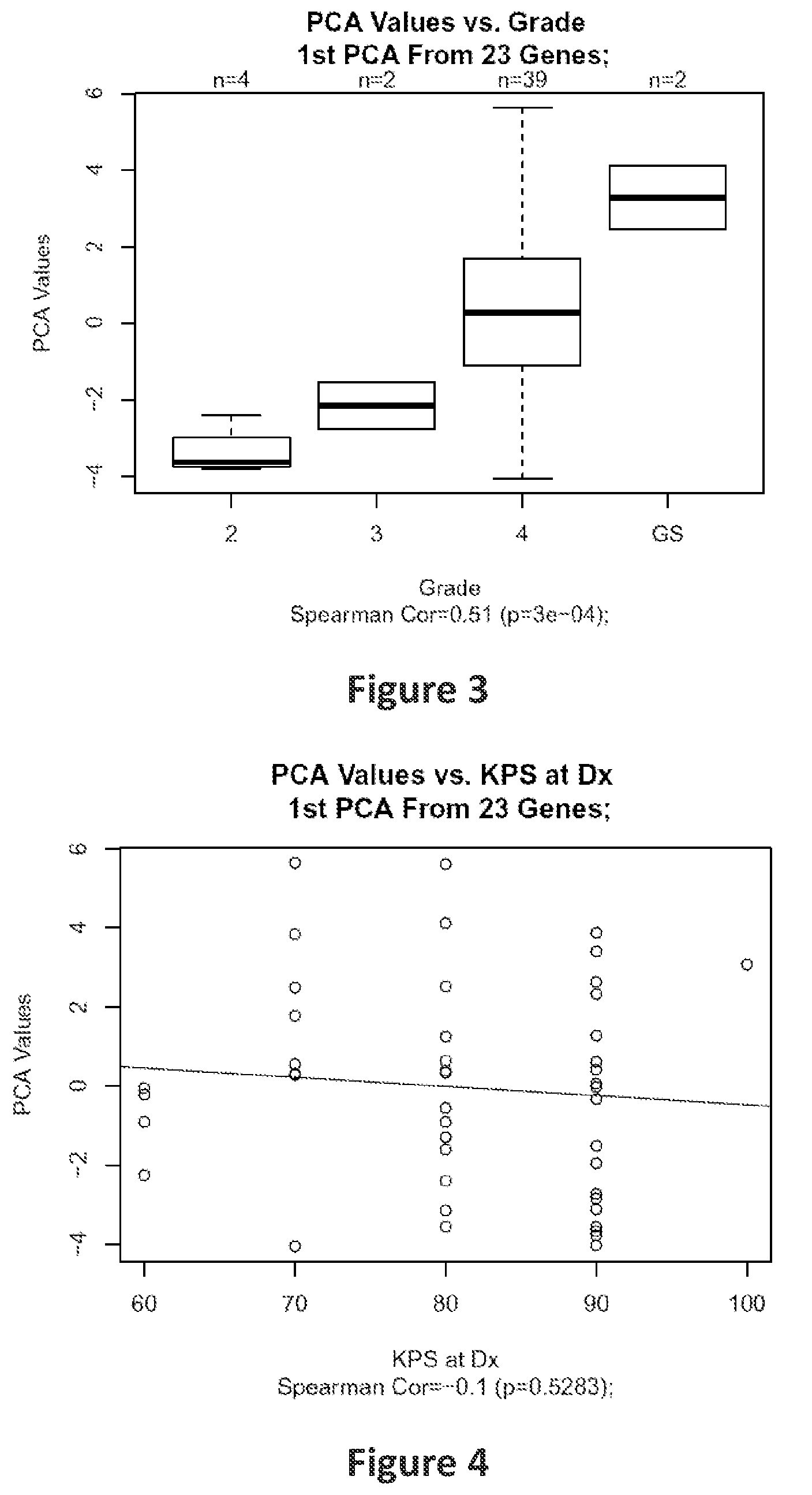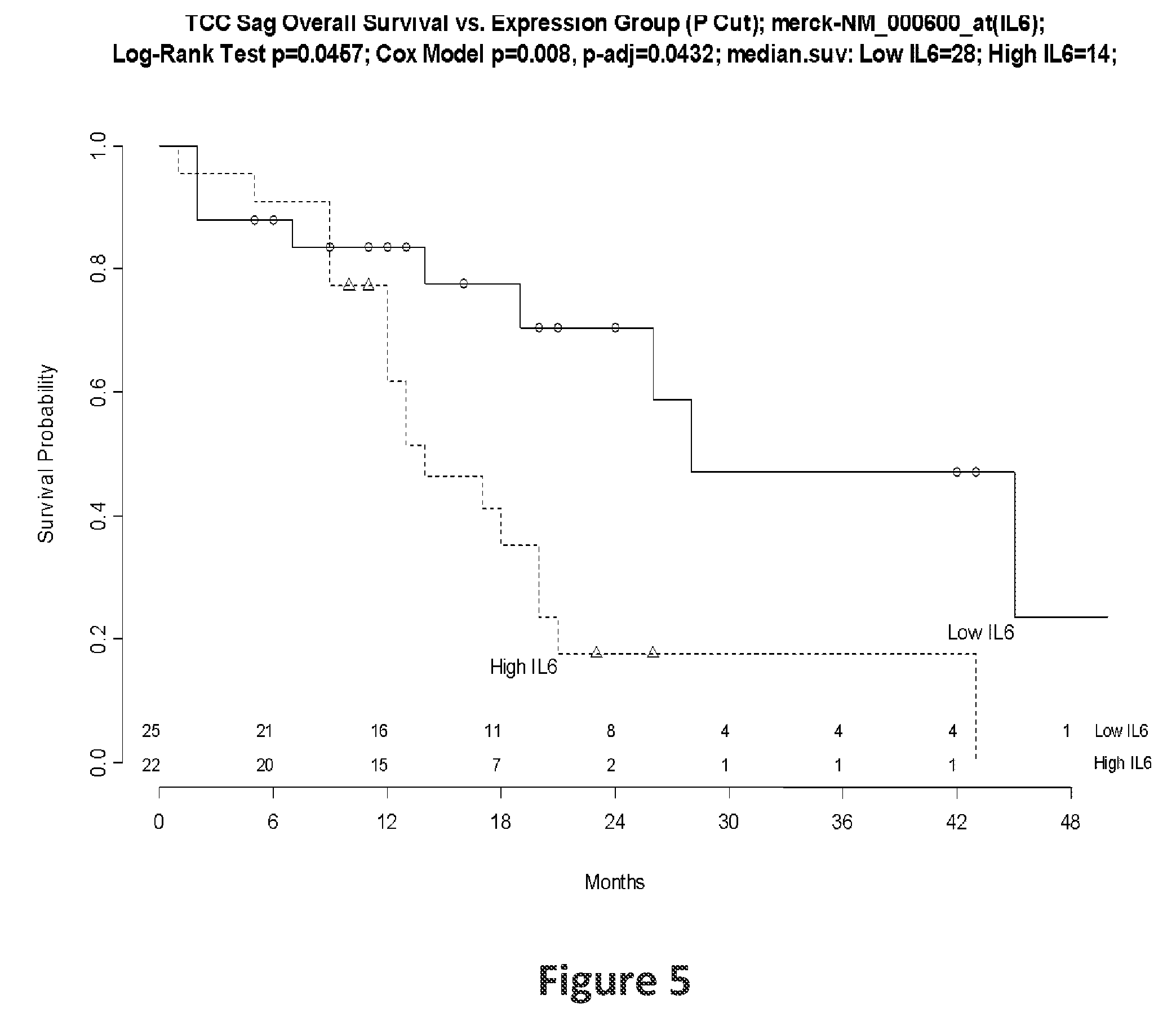Methods of predicting high grade gliomas using senescence associated genes
a technology of senescence and associated genes, applied in the field of tumorigenic assays, can solve the problems of speech or memory loss, weakness in the extremities, and difficulty in successfully treating high-grade gliomas (anaplastic astrocytoma and glioblastoma), and achieve the effects of improving the survival rate of patients, improving the survival rate, and improving the survival ra
- Summary
- Abstract
- Description
- Claims
- Application Information
AI Technical Summary
Benefits of technology
Problems solved by technology
Method used
Image
Examples
example 1
Materials and Methods
[0086]Frozen tumor samples from 47 patients of different ages (31 to 81 years) with the histologic diagnosis of HGG were macrodissected and arrayed on a custom version of the Affymetrix HG-U133+GeneChip.
[0087]A set of 14 known senescence-associated genes (SAGs) including CCL2, CCL7, CDKN1A, COPG, CSF2RB, CXCL1, ICAM1, IGFBP3, IL6, IL8, SAA4, TNFRSF11B, TNFSF11 and TP53 were examined. An overall senescence score was generated using the first principal component from principal component analysis to reflect the combined effect of the senescence-associated gene signature. The methods of using principal component analysis to obtain a gene signature score are the same as those described in Chen D. T. et al., which is incorporated herein in its entirety by reference. (Chen D. T. et al., Proliferative genes dominate malignancy-risk gene signature in histologically-normal breast tissue. Breast Cancer Res Treat. 2010 January; 119(2):335-46)
[0088]Pearson correlation and Co...
example 2
[0103]SAG can be used as biomarkers to diagnose neoplasia such as high grade gliomas. In this embodiment, an expression level of at least one SAG is obtained from a sample and is compared to a control expression level. An increase in the expression level of SAG obtained from the sample can indicate a diagnosis of high grade glioma.
example 3
[0104]SAG can also be used to monitor the progression of a high grade glioma from one biological state to another. In this embodiment, an expression level of at least one SAG is obtained from a tumor sample at a first timepoint. A second expression level is obtained from the tumor sample at a second timepoint that is at a predetermined interval after the first timepoint. The expression levels are compared and an increase in expression level from the first timepoint to the second timepoint indicates disease progression while a decrease in expression level from the first timepoint to the second timepoint indicates disease regression.
PUM
| Property | Measurement | Unit |
|---|---|---|
| follow-up time | aaaaa | aaaaa |
| morphology | aaaaa | aaaaa |
| resistance | aaaaa | aaaaa |
Abstract
Description
Claims
Application Information
 Login to View More
Login to View More - R&D
- Intellectual Property
- Life Sciences
- Materials
- Tech Scout
- Unparalleled Data Quality
- Higher Quality Content
- 60% Fewer Hallucinations
Browse by: Latest US Patents, China's latest patents, Technical Efficacy Thesaurus, Application Domain, Technology Topic, Popular Technical Reports.
© 2025 PatSnap. All rights reserved.Legal|Privacy policy|Modern Slavery Act Transparency Statement|Sitemap|About US| Contact US: help@patsnap.com



